Search Engine Optimization Tutorial, the SEO Basics
Get the SEO basics right, before you dig deep! Content creation beginner, intermediate, or expert alike, when you publish a web page on the Internet, your primary intent is to share useful content to your target audience. The art or business of content marketing so to speak. To get it to your audience, you either share it through emails, social media, or you can make it easily and organically searchable via search engines. Search Engine Optimization (SEO), this is where optimizing of website content for search engine indexing comes into play. The sustainable way to attract organic web traffic to your website.

What is SEO? The optimization of website content for search engine indexing.
There are many search engines around such as the most popular Google or Bing. Their rules and criteria of how to make the online content pages searchable may be different and keep changing. It will be an arduous task to get everything, if not most, right for all of them. It takes time and effort.
Here, we share with you the most important attributes based on past experience, to make your content well optimized for search engines. Focusing on the most popular search engine (or at least your preferred), say Google. When the results rank well on the top search engine, the rest should follow.
And we will round up with an objective summary of where you can go to further your advancement in the realm of SEO, and how up and coming technologies such as AI may affect the basics of SEO.
Let’s get started and going with SEO basics. The beginners guide to search engine optimisation success!
At a glance, the SEO Basics:
- Relevant, unique and quality content
- Search keywords or key phrases
- Browser title, page title and URL clarity
- Meta description (yes) and keywords (not so much)
- Internal links, for inducing inherent link juice
- Linkable, shareable content, promotes backlinks and social signals
- Link to external references or facts, to support and reinforce
- Fast loading and responsive
- Location awareness
- Authenticity, security and trust
- Usability and maintenance
1: Relevant, unique and quality content
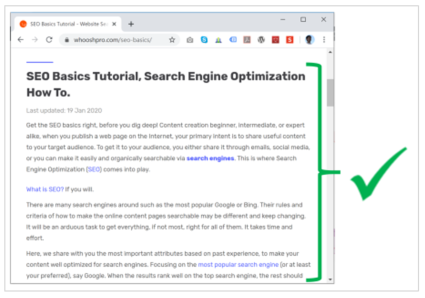
The most important will have to be the relevance and quality of the content. It is a supply and demand situation. If your content is unique and useful to your audience, the demand will rise, and sustain. Especially content of expertise. When demand rise, so will search engine ranking. Search engines follow human behavior to search for relevant and accurate information. They mimic closely to human search patterns to weigh and rank search results.
User centric content is king, and key to SEO. Learn about content strategy, and plan your pillar content and cornerstone content well. These are parts and parcels of content marketing and search engine optimization.
2: Search keywords or key phrases
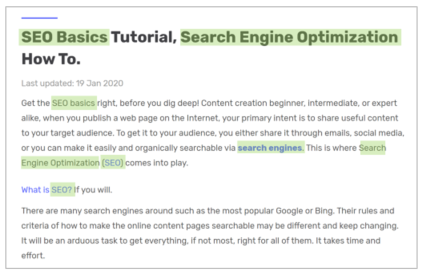
Optimizing for search revolves around the concept of carefully selecting your important keywords and key phrases and build them into part of your quality user centric content.
Identify your focus keywords or key phrases. Use them at least 2 times within the content and emphazie them in your proper language, naturally. Do not turn to keyword stuffing. This way, your reader will understand your intent, and so will the search engine. Do your keyword research and deploy long tail keywords where necessary.
Use your keywords in important elements of your website. Such as meta descriptions, titles, headings, URLs and digital assets attributes (e.g. alternate text, or caption or blurb text content around your videos).
3: Browser title, page title and URL clarity
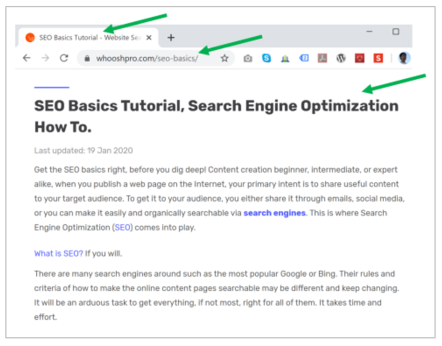
Your focus keywords or phrases should be easily and concisely found in the browser title, page title or URL. Preferably at the very start of the sentence. This is logical, because they are the key attributes of your web page that a user will identify with, quickly and memorably. They are visually apparent to the reader. Search engines will give priority to these attributes when displaying in the search results. Simply and logically because they can also be speedily identified in the search result display context.
And do not underestimate the power of a well crafted user friendly URL. A well crafted URL clearly shows at the web browser address bar what a page is about, or a web link can easily been seen via the SEO friendly url indicating what a link is about. To effectively craft a good URL for SEO, you should also understand the difference between underscores and hyphens to search engines.
Also, be mindful of how you use the HTML H1 Tag to mark up the page title, as it may give useful insight to search engine about your page. Avoid unstructured use and know the importance of H1 Tag for SEO.
4: Meta description (yes) and meta keywords (not so much)

Make a point to write good summary of your page through the Meta Description. It will give search engine a choice to display this if it cannot find any more appropriate blurb within your visible content body (based on the user search context), to display on the search results summary or blurbs. If you will, use the Meta Keywords to add related keywords or phrases in relation to your content. But today, Meta Keywords may not be the most important factor or sought after attribute for search engines ranking as they are hidden behind human eyes – not visually apparent or user centric, and provide no real value to the human reader.
Meta Description, along with Browser Title and User Friendly URL form the import display elements of Search Engine Results Page (SERP).
5: Internal links
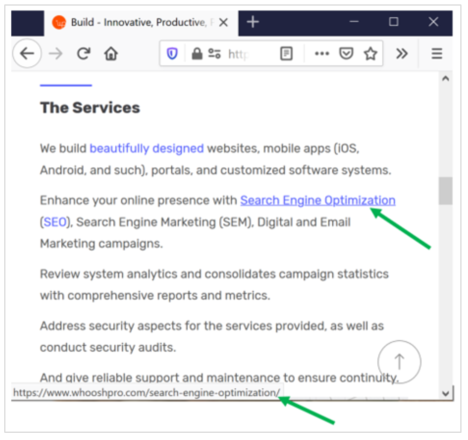
Where applicable, link to related or continuation of curated content within your website. This helps reader gain knowledge and information progressively, and at the same time, get them to understand your website information architecture. Search engines will also be able to crawl your related internal links and infer userful information about your content structure. They collect related information that transpire information into search index catalogue, ranking and weighing mechanism.
6: Linkable, shareable content
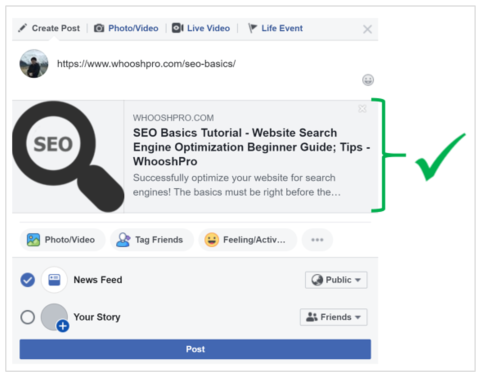
Your content page should be linkable. So that you or your reader can easily share via email or social media. Make good use of Open Graph meta tags (such as og:image and og:description) to enhance your user share experience on major social media platform sharing by curating meaningful share snippets. Coupling well curated share title and description will definitely go a long way to improve overall searchability. Good content deserves to be shared, and ranked high for other users’ benefit. Naturally, more shares and circulations lead to higher traffic to your website, the more the search engine will want to bring your content to relevant content searchers. Think about how you hear a hot news from TV and your search for related news on the search engine appears at the top results in just a short period of time (in matter of hours). Hot topics, when there is buzz, gain high traction. And better still, useful information tend to attract backlinks which further attest to your content value. As a result, add to your site’s search ranking. In turn, genuine user engagements and activities give rise to good social signals for good search engines ranking.
7: Link to external references or facts
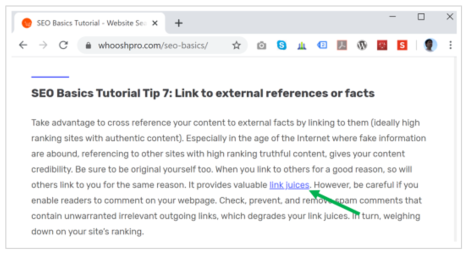
Take advantage to cross reference your content to external facts by linking to them (ideally high ranking sites with authentic content). Especially in the age of the Internet where fake information are abound, referencing to other sites with high ranking truthful content, gives your content credibility. Be sure to be original yourself too. When you link to others for a good reason, so will others link to you for the same reason. It provides valuable link juices. However, be careful if you enable readers to comment on your webpage. Check, prevent, and remove spam comments that contain unwarranted irrelevant outgoing links, which degrades your link juices. In turn, weighing down on your site’s ranking. Search engines today value authentic and true cross reference links, like human do, when useful content are factually correlated and easily found.
8: Fast loading and responsive displaying

From day 1, make web page speed of loading and responsivity the key goals to achieve. Optimize your web pages and digital assets in your website for faster serving to your audience. Striking a balance between speed and quality of your digital assets. Develop your web pages to be well displayed to as many device form factors as possible. With a fast loading site, you will minimize visitors drop out rate due to long waiting time, reaching the furthest visitor in shorter time. With a responsive website, you will cater to a widest reach possible to visitors using a variety of modern devices that spans different screen sizes. With fast, far and wide reach for your website to your visitors, search engines will naturally pick you up like how your visitors will.
9: Location awareness and proximity
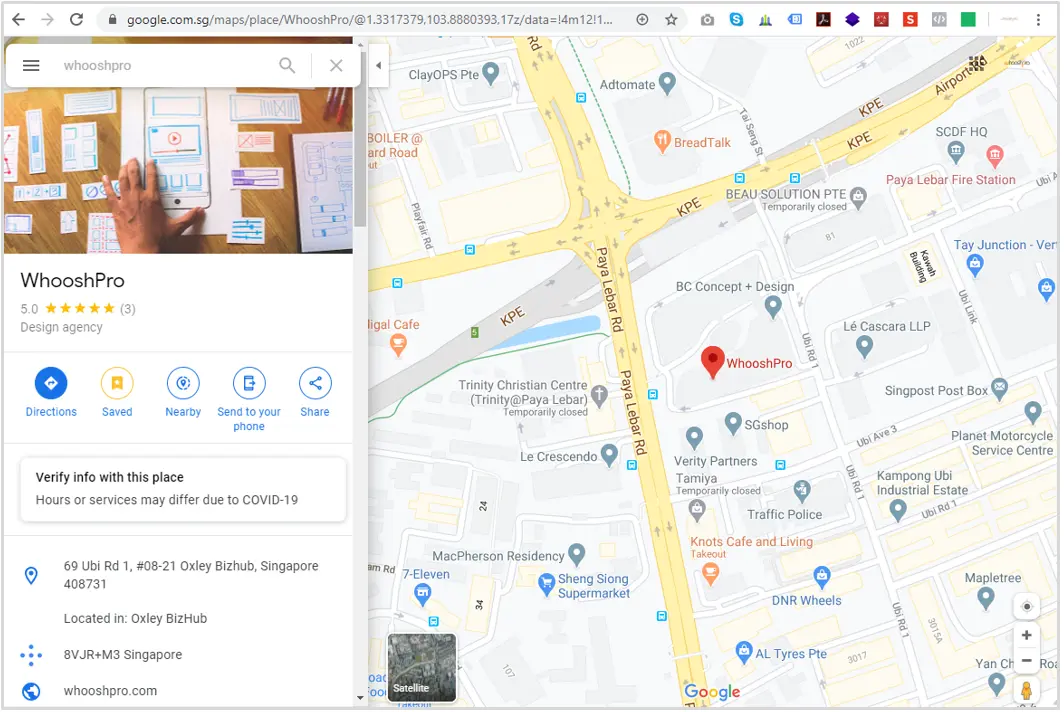
Of course, the location and proximity of your audience is of importance to your delivery. Especially if you provide phyiscal products or services. Make sure you make yourself known in terms of physical address and locality. By doing so, you allow search engines to help differentiate a search more suitably for your target audience where nearness is crucial. Let the search engines know more accurately by using their tools. E.g. claim your business with Google Business Profile and put your location up on Google Maps and provide accurate information. This will give your users or target audience an all round search results outcome and relevancy. Thereby improving search accuracy and ranking on the resultant platform such as Google Maps.
Imaging a user searching for SEO services based in Singapore, it does not make sense for search engine to prioritize results that are based in other countries, especially those that are located far away around the world.
10: Authenticity, security and trust (positive vibes)

When a business or website is authentic, trustworthy, it consists of attributes that sends out positive vibes to those who have not worked with you or know you yet. You will want to show case your credentials by having extensive positive rating, feedback and accreditation on the Internet. Build your strong credibility by providing good service and professionalism, and gathering good rating and reviews on various platforms – for example using Google rating.
Besides that, ensure that your online brand gives trustworthiness in terms of cyber security and technicality by having strong security and data protection policies, such as using HTTPS and practicing good privacy policies.
11: Usability and maintenance (review and update)

With good knowledge in basics of SEO and the fundamentals put in place, you will want to upkeep for the long run. Continuously review and update your website based on current SEO trends, remove errors such as broken links, and address accessibility fine tunes when the needs arises. Pay attention to every usability details, including practicing good digital assets file naming conventions. Well kept website ensures good usability and continuity, which your users will appreciate – so do search engines.
Make good use of analytics tools (e.g. Google Analytics) and search engine optimisation tools (e.g. Google Web Master Search Console) to research and refine your optimizations. Exploration is key to successful fine tuning efforts.
SEO Basics, Search Engine Optimization Essentials Summary
In conclusion, the SEO basics are pretty much related to human search behavior, the way your target audience search for your content via keywords or key phrases. Your content must be useful and supply to a demand. Bear in mind to cater to your users content needs and give quality over quantity. Provide useful and genuine content for consumption.
Follow good and fair SEO practices. Perform optimization through authentic channels and means. A word of caution, do not deploy unfair or unnatural tactics to try fool search engines to rank you high. You may end up having detrimental effects instead. It is also helpful to look at how to avoid common mistakes optimizing for search while focusing on the good practices.
And of course, make your website speedy, and reach the furthest and widest possible audiences, with good responsivity and great user experience. In short, your web vitals must be well tuned.
Finally, search engine optimisation does not end here or stop anytime. It is a continuous process. Constantly keep up to date with the latest SEO trends to be well positioned in search results! With the help of our SEO basics tips, you should do pretty well ranking high and relevant in search engines results.
Rise of AI (Artificial Intelligence), and Its Effects on the Basics of SEO
As we wrap up the core fundamentals of SEO, it’s important to understand how modern technologies are shaping the way these basics are applied – especially with the rise of Artificial Intelligence.
Artificial Intelligence is rapidly transforming how search engines and digital tools interact with website content. From Google’s AI-driven algorithms to third-party platforms that analyze and evaluate pages using machine learning, AI is now deeply embedded in the SEO process. However, despite these technological advances, the core principles of SEO remain essential.
AI tools (such as ChatGPT, Gemini, Copilot, deepseek) rely on well-optimized, clearly structured, and semantically meaningful content to deliver accurate results. If your website is built on solid SEO fundamentals – using proper heading hierarchy, descriptive titles, clean URLs, relevant keywords or key phrases in context, and intuitive internal linking – AI systems are better equipped to understand, rank, and reference your content. Rather than replacing the basics, AI rewards those who follow them well. In other words, by getting the SEO essentials right, you’re making your site not just search-friendly, but AI-ready too.
Moreover, AI tools, just like search engines, are based upon human attributes and mimic human behaviors so to augment humans in the things they do.
Search Engine Technicalities
Having strong basics, you can then progress to the more advanced, confidently. Here is one place you can dig into it further. It is a book on its own. Or go on with some SEO practical tutorial. As the way to level up and rank up, is through practice and continuous fine tune.
Many a time, to go beyond the basics, you cannot avoid digging into the technical parts. Read about how search engine indexing and ranking works.
SEO Services Needed?
Looking for Singapore based SEO Agency or need SEO experts’ help with SEO Strategy planning? Contact us if you need expertise to make your website SEO optimized, or any SEO related matters.
Our Complete Web Solutions
Wondering what more we can do for you? Find out here in our Web Solutions Build section.
Give us a rating or leave a review on Google
If we have helped you in a way or another, take a minute to leave us a Google rating or review.
Your quick rating or short review will go a long way to help others find us, so we can help them as well!

